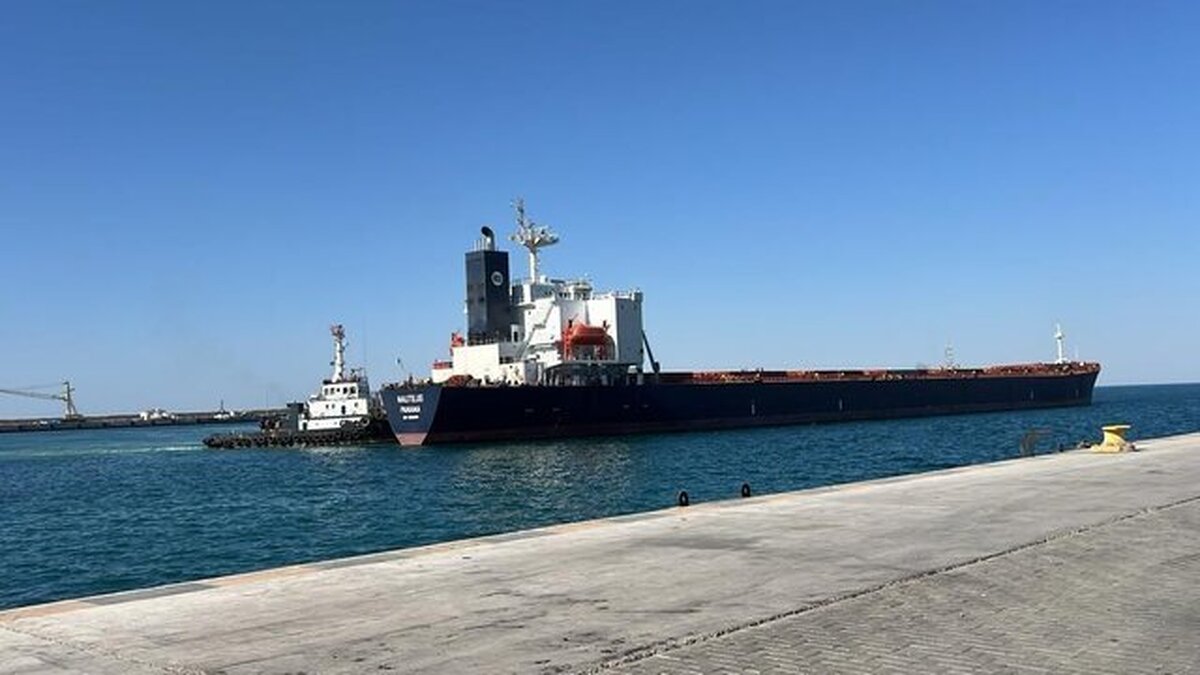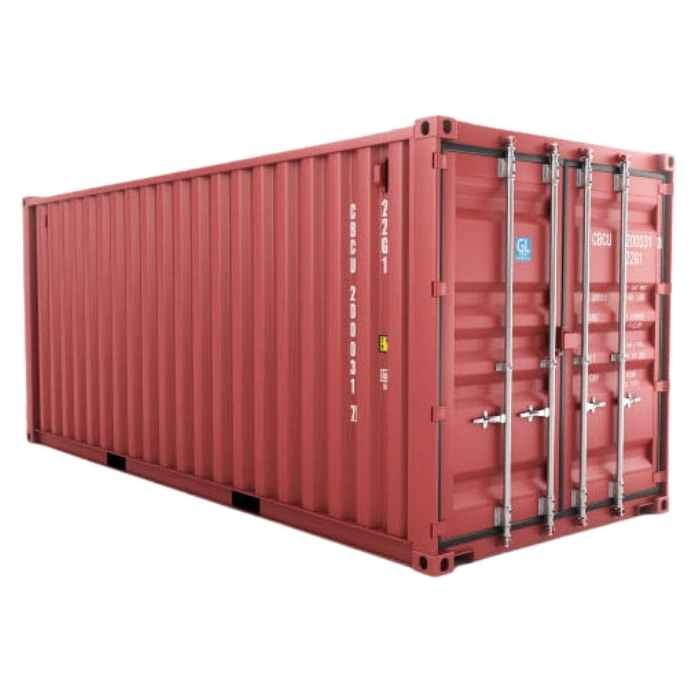
Here are the 10 most common and generally used shipping containers:
1. General Purpose Containers
The general purpose containers are the most commonly used category of containers. These are also known as Dry Containers. They are used to ship dry products, and they are fully enclosed from all sides, making them weatherproof. These containers carry standard types of cargo.
They come in various sizes ranging from 40ft, 20ft, and 10ft. Some dry containers might have flexitank or linear bags to carry certain liquids or dry bulk cargo.
2. Flat Rack Containers
Flat rack containers are ideal for carrying goods like heavy machinery, vehicles, building materials, etc. These containers have collapsible sidewalls, which can be folded to store cargo in a more accessible and efficient way. After loading the shipment, the sidewalls can be unfolded, making it a secure way to transport cargo.
3. Open Top Containers
As the name suggests, the roof or the top of the container is entirely removable. This feature makes over-height products that cannot be loaded traditionally from the front door easy to load. Likes of the product include tall machinery and finished products that are tall in nature and can be loaded from cranes or rail bridges only.
4. Double Door Containers
These containers have doorways on each ends. It is additionally known as a Tunnel container. Having doorways on each ends makes them very available for rapid loading and unloading of products. It additionally permits inserting barely wider products. Both the doorways have a comparable locking scheme and are weatherproof, making sure the security of the goods.
5. One Side Containers
One aspect containers are very comparable to the general-purpose containers. The solely substantive distinction between them that units them aside is that the doorways can open totally on the sides. Due to this capability, it creates a lots wider area to load and dump stuff. This container is perfect for substances that can't be loaded thru the the front doors. One facet container is typically accessible in two sizes, 20’ and 40’.
6. ISO Reefer Containers
The ISO reefer is an great type of container. These containers are commonly used for storing and transport temperature-sensitive merchandise or materials. The most frequent examples of the merchandise can be edibles like fruits, vegetables, meat, etc. Keeping them at a precise temperature is necessary; otherwise, they will rot earlier than accomplishing their destination.
These containers are powered by means of an exterior electricity supply to keep the particular inner temperature inner the container.
7. Insulated Containers
Similar to the closing container noted above, this comes beneath the extraordinary class of containers. The insulated containers share a lot in frequent with the ISO Reefer container.
The solely distinction is that the thermal container has a regulated temperature that can cope with excessive temperatures. They are connected to a mechanical compressor to warmth or cool the insides of the container. They lift objects that are without problems affected by means of temperature, like blood, organs, meals materials, etc.
8. Tank Containers
The diagram of a Tank container is very unique from our standard containers. These containers are designed to raise liquid or fluid materials. They are made up of robust metal and anti-corrosive materials.
But there is a circumstance with them, and these tanks ought to be 80% stuffed to forestall surging of drinks inner them and must now not be stuffed extra than 95% to enable ample room for thermal expansion.
9. Half Height Containers
They are most normally used in transporting bulk cargo that is supposed to be extraordinarily heavy and dense in nature. Goods such as coal and stones are the best stuff for half-height containers. The most location the place these containers are utilized is the Mining industry. They are designed in a way so that they have a low core of gravity in contrast to our tall containers for higher handling. These are very sturdy and very handy to load and sell off goods.

10. Car Carriers
These containers are mainly designed for transporting newly manufactured vehicles from one vicinity to another. Most of the motors we use are imported, and these containers assist them attain their vacation spot safely. These containers are outfitted with collapsible facets that permit the vehicle to get loaded in the container.
20ft vs. 40ft: Picking the Right Size Shipping Container
The dimension of a container can dictate different factors of your purchase, such as circumstance (new vs. used) and cost. Therefore, it’s a extremely good area to begin when attempting to decide how to select the proper container.
The two most famous transport container sizes accessible for buy are 20ft and 40ft. While there are different sizes available, such as 10ft and 30ft containers, they’re much less frequent and can consequently be greater difficult to source.
20ft Shipping Containers
20ft transport containers are designed to raise a small quantity of heavy cargo, such as equipment and heavy commodities like sugar, paper, cement, and steel. A 20ft delivery container’s empty weight is 5,181 lbs. On average, 20ft containers have a loading capability of 62,016 lbs.
A 20-foot container’s interior quantity is 1,172 ft3. That’s the equal of 200 wellknown mattresses, two compact cars, or 9,600 wine bottles.
A 20ft delivery container’s dimensions are as follows:
External: 20’ L x 8’ W x 8’6 H
Internal: 19’4” L x 7’8” W x 7’10” H
Door: 7’8” W x 7’5” H
40ft Shipping Containers
Next up are 40-foot containers. These can elevate double the quantity of a 20-foot container, however now not as tons weight — typically, their cargo is composed of cumbersome but lighter items such cotton, electronics, and patron furniture. A 40ft transport container’s empty weight is 8,267 lbs, with a loading capability of 63,383 lbs (only 2.2% extra than its 20ft equivalent).
A 40-foot container’s inner quantity is 2,385 ft3. That’s the equal of four hundred widespread mattresses, 4 compact cars, or 19,200 wine bottles.
A 40ft transport container’s dimensions are as follows:
External: 40’ L x 8’ W x 8’6 H
Internal: 39’6” L x 7’8” W x 7’10” H
Door: 7’8” W x 7’5” H
https://usedconex.com/shipping-containers-in-tulsa-ok




